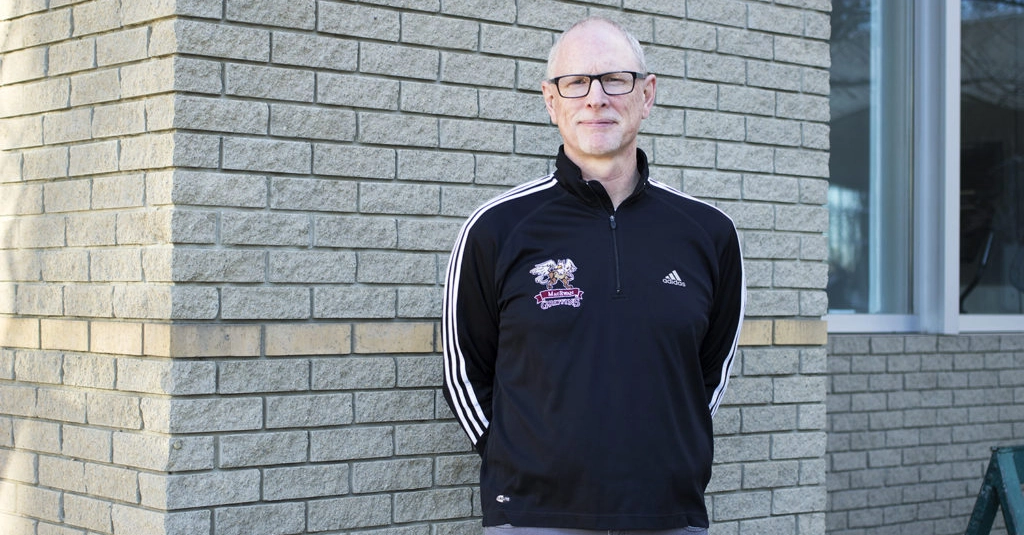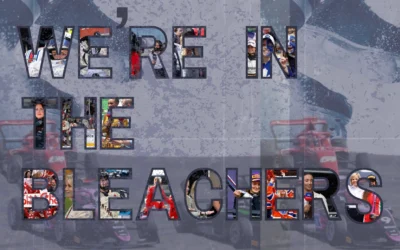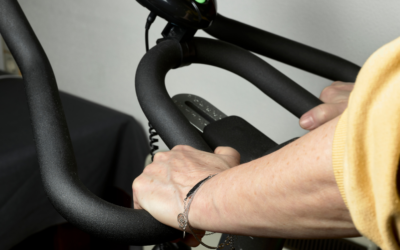After transitioning from a community college to a university, it was only a matter of time before MacEwan University’s athletics department would make a leap that would change not only how our athletes compete, but also how the university is perceived. As a college and a new university, MacEwan played in the Alberta Collegiate Athletic Association (ACAC), alongside other colleges and fledgling universities across Alberta.
In 2014, six teams in three different sports began their transfer into the Canadian Interuniversity Sport (CIS) league. Prior to this, MacEwan had often been labelled as a stepping stone — a school from which students would transfer after one or two years in order to complete their degree at another school.
However, the university has expanded its academic offerings, and the transition into the CIS has come hand-in-hand with the necessity for MacEwan to offer more opportunities to its student athletes.
Coach Ken Briggs has been with MacEwan’s women’s volleyball team during both its ACAC and CIS days. In the collegiate days, his team would sometimes lose players after one or two years due to a transfer. It was simply a part of being a stepping-stone post-secondary institution.
The then-college could not offer sufficient programs for a lot of students, but that’s starting to change. “[Before], we’re not going to get some of those older players,” he says, “[but] now, we can keep athletes for their five years of eligibility.”
For many years, the Griffins were at a serious disadvantage compared to top-tier schools due to the lack of programs to lure students to play for the Griffins. There were simply more attractive schools (specifically, the University of Alberta) that would be more desirable to high-profile players.
Simply put, MacEwan had little long-term appeal.
Despite not landing top athletes, the Griffins enjoyed many successes in the ACAC, mostly because many of the other schools dealt with the same issues. Now that MacEwan is playing in the CIS, the issue of not attracting high-profile athletes can make a huge difference in how the teams finish.
Despite the disadvantages, a few of the Griffins teams, such as the women’s soccer and basketball teams, have risen to the challenge of the new league. Bringing in talented players has proven to be only half the battle; it’s been an entirely different struggle to keep them around for the duration of both their academic pursuits and athletic eligibility.
“If you looked around the league before we joined CanWest, it was riddled with former MacEwan athletes who had wanted to make the jump so that they were able to be the best at everything they did,” says Eric Magdanz, head coach of the men’s basketball team.
“This transition has allowed us to [retain these athletes], and allowing our student athletes to do that has put MacEwan University into the same talks as the U of A, UBC, and some of those larger institutions.”
The transition is still in progress, as the Griffins are still in the midst of a probationary membership in CIS. There are also other Griffins teams that are still a part of the ACAC, such as golf and hockey. These teams are also aiming to make the jump to CIS soon.
The consensus among the coaches and administration is that there will be no obstacles to achieving CIS memberships for all Griffins teams.
Athletics administration was also hopeful that the move to CIS would help with an increased attendance rate at sports games. A small group of dedicated fans litter the stands during every home game; during the Whiteout, many more fans show up to cheer on their teams. Coaches, players and athletics in general are hoping to see a Whiteout-level crowd at every game.
MacEwan is no stranger to athletic success, either. Not only are the walls of the main gym covered with banners, but many teams were consistently recognized as top-tier contenders in the ACAC. This type of recognition has served the teams well throughout this transition, and coaches are optimistic about the future success of their teams.
“There’s a history here! I know it because I was a part of that 14 years ago,” says Briggs.
“For decades, we have been a leading member of the ACAC, the best college league in Canada. It was a natural progression that we take the next step.”
The expansion of academic programs, as well as entrance into the CIS, has helped the men’s basketball team, making it a substantial competitor. For the first time in the team’s history, there will be players who will complete their athletic eligibility at MacEwan.
“It was probably one of the biggest knocks on us as a program, not being able to retain players,” Magdanz says.
“Now that we can say, ‘You can stay here and you can graduate here,’ we can build that base of alumni that will hugely benefit the program in years to come.”
The transition doesn’t just benefit the athletes of tomorrow, though. Those athletes who are currently going though the programs will enjoy the benefits of the new spotlight.
Ideally, graduates and student athletes will see the recognition of the university’s prestige start to grow, perhaps even rivalling the U of A in both academics and sport.
Some teams, however, including both volleyball teams, have struggled to translate ACAC success into CIS success. The men have struggled mightily, but the coaching staff has committed to building a winning team from the ground up. The women have had it tough as well, losing a few of their players to academics, both in other schools and within MacEwan itself. Some programs are too strenuous to balance both athletics and academics.
Other teams have had some recruits not pan out as hoped, but none of these issues are stopping the teams from continuing to work towards success.
Despite these struggles, there have been some successes since the Griffins’ transition into the CIS. The women’s soccer team, for example, has made the playoffs in both seasons in the CIS, advancing to the second quarterfinal this season.
The women’s basketball team has made the playoffs in both years as well, maintaining the dominance that it had at the end of its ACAC run. They left the ACAC as provincial champions and are handling the transition very well. Not to be outdone, the men’s basketball team just clinched a playoff spot for the first time during its short history in CIS.
However, not even they have been immune to a drastic change in style of play.
Megan Wood has been an integral part of the women’s basketball team during its time in both the ACAC and CIS, and she was worried at the beginning of the transition.
“’I’m a forward, and I’m already undersized for ACAC, so I was really small for CIS,” she says. “Girls [at that level] are stronger, bigger, faster… it was a big transition.”
“But it was a fun transition, and we have just meshed together, and came through when we needed to.”
Whether the success is immediate or earned over time, the Griffins teams have committed to taking the next step. While the transition is ongoing, and the school is still on a probationary basis in the CIS, the path ahead is nothing short of exciting.





0 Comments